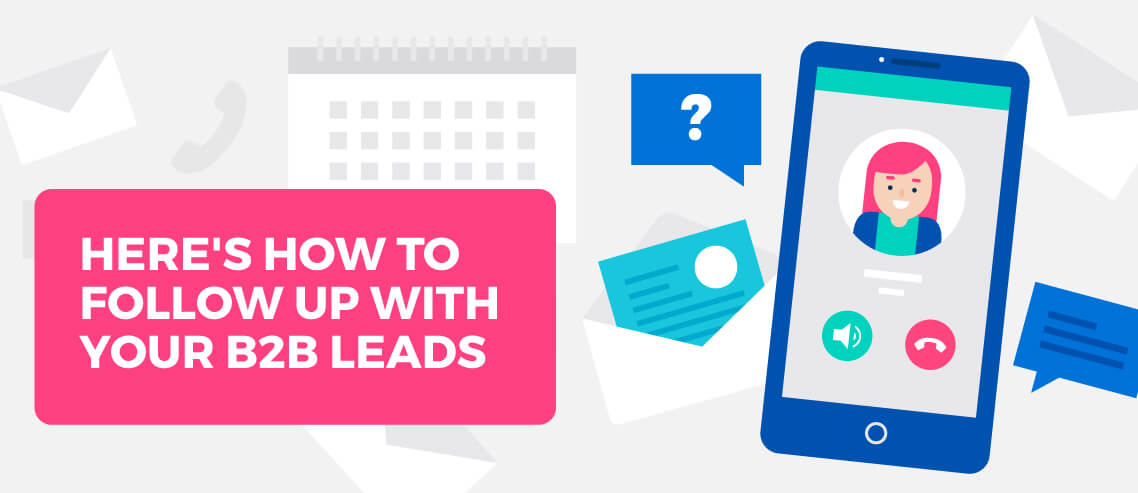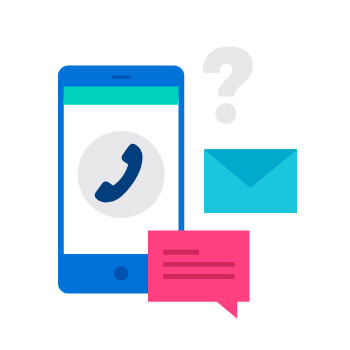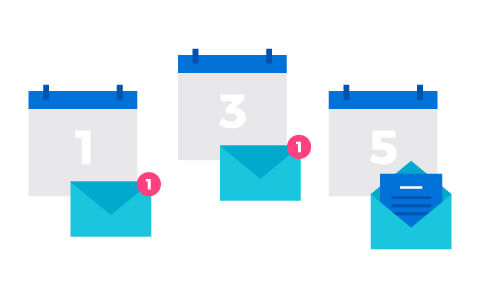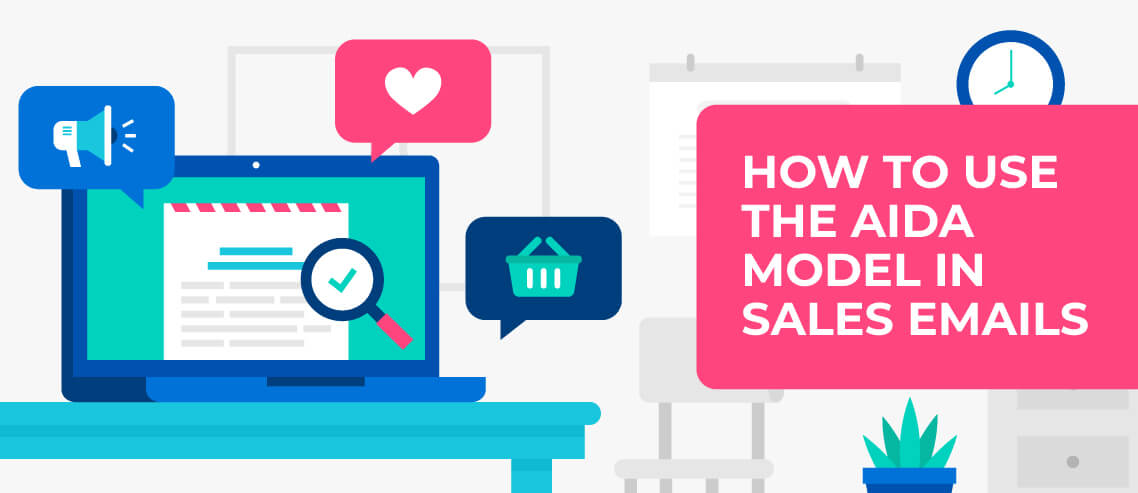Here’s How to Follow Up with Your B2B Leads

Contents
The initial contact with a potential client is important, but success more often than not lies beyond that initial phone call or email. Sales reps who make multiple attempts to contact a buyer have a 70% higher contact rate.
The basic rule of thumb is that a salesperson should make a minimum of five attempts at reaching out to a client, before calling it quits. The sale relies on how well a rep follows up with an inquiry, and like with so many aspects of business, there’s a right way to do it.
Ask Your Leads to Share their Preferred Follow-up Channel
So many sales representatives overlook this strategy because it’s almost too simple. But every client is different. Some prefer email, while others still like to talk on the phone. And, as technology evolves, there are businesses that prefer to text or use messaging apps to communicate.
Inside Sales, a company dedicated to helping companies grow their pipeline conducted a Lead Response Management Study. And, they learned quite a bit about using different channels for follow-ups.
- Wednesday and Thursday were the best days to try and call a lead
- Mondays after 3:00 PM is a good time to follow-up using email
- Qualifying rates are better between 4-5 PM
- The best time to call is between 4-5 PM
- The second-best time to call is between 8-9 AM
Be sure to ask your lead to set expectations for your follow up as well. You can say, when is a good time to call? This way, they are expecting you and you do not disrupt their day.
Phone Calls
A phone call is the most personal form of a follow-up you can have with a prospective client. And, a lot of times it can be tough to decide if you should call or email. Here are a few things to keep in mind.
What is your goal? If you are requesting something important like a meeting or any other type of commitment, call. The reason is because you will be invited to follow-up with an email.
In addition, you should call the higher-ups in a company. These are the people that are likely to have an assistant, so you will reach a live person. This is how messages get delivered.
The bottom line when considering phone vs. email follow-ups is to think about the person’s you are communicating with. Millennials prefer email while more traditional industries prefer phone calls.
Emails
Emails are crucial because 63% of companies requesting information on your B2B services will purchase anything for 3 months and another 20% will not purchase anything for 12 months. So, there must be power in your follow-up strategy — specifically you will hear “no” five times before closing a sale. A study from Marketing Donut concluded the following.
- 44% of sales people give up after one “no”.
- 22% give up after two “no’s”.
- 14% give up after three “no’s”.
- 12% give up after four “no’s”.
What this means is that 8% of B2B salespeople are closing 80% of the sales. The bottom line is simple, send more than five emails over a three to 12-month period and your number of closings will significantly increase.
Text Messages
Texting has become one of the most popular ways for people to communicate. Over the last decade, the amount of monthly texts sent has increased by 7,700%. More people than ever have smartphones, and multi-platform apps allow people to seamlessly message one another from desktop, tablet, to phone.
Texting is quick, easy, and unlike phone calls, can include attachments like product specs or links to product pages.
This is particularly true when you are trying to close a sale with a millennial. Studies show that 53% of millennials find text messages less invasive than phone calls. So, the takeaway here is knowing who you are dealing with.
Strategies to Use When Following Up
There are several basic rules you need to consider when you follow-up with your B2B leads. Paying attention to these few tips will help you close the sale much faster than the competition.
Be Persistent. (But Don’t Pester Them)
It sounds like a cheesy line from a motivational speaker, but 99% of success comes from not giving up. Not every sale is done in a day. One study even found that it takes an average of 18 calls for a sales rep to connect with a buyer. A sales lead has their own job to do. It may be crunch time for a big project, and the buyer simply doesn’t have the time to submit an order, even if it’s something their company will need. Just because they didn’t buy on the first call or email doesn’t mean they’ll never buy.
It can be a fine line between being persistent and annoying, and that line isn’t going to be at the same place for every customer. Don’t blow up a lead’s voicemail. A salesperson should give someone 48 hours to get back in touch with them. Even if a lead doesn’t return any of the calls, that doesn’t mean they should be forgotten. Sending the last email stating in a friendly manner that now obviously isn’t the best time to contact the lead leaves the door open for future potential sales.
Fast Call Backs
Modern communications can feel overwhelming at times. Our phones (office and cell), email, and texts can bombard us with an endless stream of calls and messages. It’s easy to get behind, which is a good way to kill a lead.
If you want to close the deal, get back with someone within 10 minutes. Taking longer than 10 minutes can decrease the odds of landing a sale by 400%.
Build Rapport
Sales is a people business, and a sales rep needs the clients to like them and see them as a person. That doesn’t mean they have to be best friends, but letting things touch on personal can go a long way to closing a deal. True rapport means more than mutual politeness.
It’s a tangible connection. Favorite sports teams, hobbies, schools, fraternities/sororities, and such are a great way to form an instant connection.
One important tool that shouldn’t be overlooked when it comes to building rapport is social media. 72.6% of salespeople using social media to reach out to leads outperform their colleagues who don’t. A sales rep can connect with a lead outside the often more confining professional atmosphere of the office.
It can provide a mutual two-way street of insight for the sales rep and the client. Remember to be sincere and truthful on social media. Getting caught in a lie can make a good professional relationship go cold.
Conclusion
Not only is following up with a lead important, a sales rep will need to employ several of them at the same time – i.e. sending a text while talking to a buyer. The trick lies with finding out which tool or technique works best with which clients.
The only universal rule is that a sales rep will need to reach out multiple times in different ways. Send that email, make that call, and if a little extra help is needed, use specialized tools like chatbots to automate the more routine texts. Doing these things is how sales are made.





